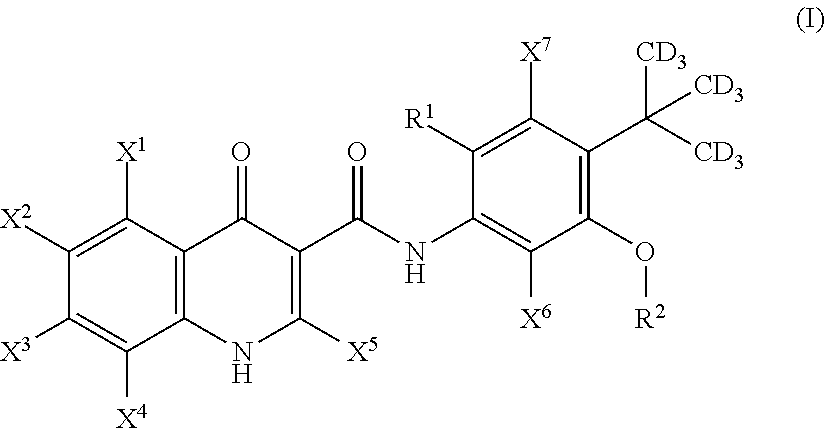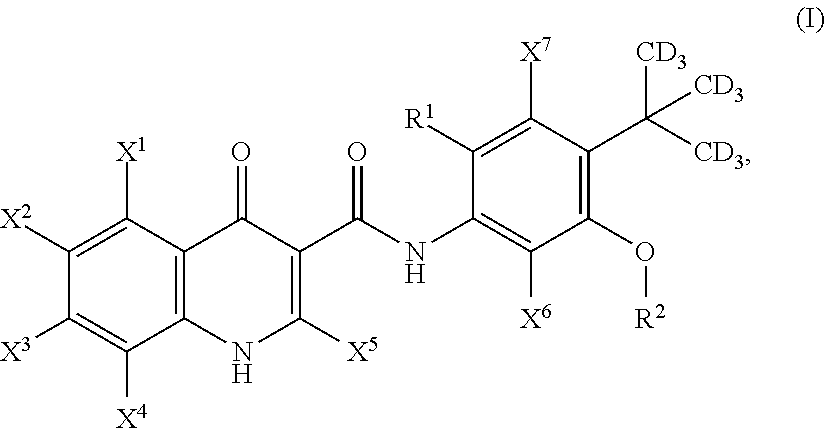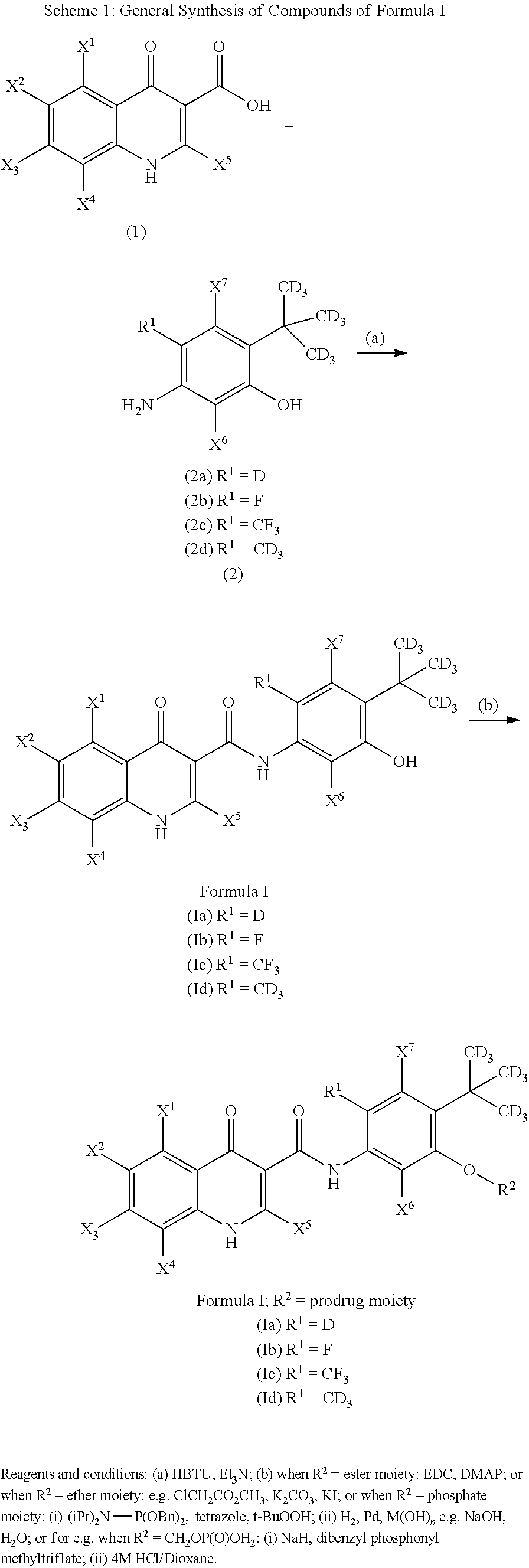Deuterated cftr potentiators
a potentiator and deuterated technology, applied in the field of deuterated cftr potentiators, can solve the problems of poor absorption, distribution, metabolism and/or excretion (adme) properties, poor adme properties, and many current medicines
- Summary
- Abstract
- Description
- Claims
- Application Information
AI Technical Summary
Benefits of technology
Problems solved by technology
Method used
Image
Examples
example 3
n of Metabolic Stability of Compound 100 in Human CYP3A4 Supersomes™
[0149]SUPERSOMES™ Assay.
[0150]Stock solutions (7.5 mM) of Compound 100 and Compound A were prepared in DMSO. The 7.5 mM stock solutions were diluted to 12.5 μM in acetonitrile (ACN). The human CYP3A4 Supersomes™ (2000 pmol / mL, purchased from BD Biosciences™) were diluted to 62.5 pmol / mL in 0.1 M potassium phosphate buffer, pH 7.4, containing 3 mM MgCl2. The diluted supersomes were added to wells of a 96-well polypropylene plate in triplicate. A 10 μL aliquot of the 12.5 μM test compound was added to the supersomes and the mixture was pre-warmed for 10 minutes. Reactions were initiated by addition of pre-warmed NADPH solution. The final reaction volume was 0.5 mL and contained 50 pmol / mL CYP3A4 Supersomes™, 0.25 μM test compound, and 2 mM NADPH in 0.1 M potassium phosphate buffer, pH 7.4, and 3 mM MgCl2. The reaction mixtures were incubated at 37° C., and 50 μL aliquots were removed at 0, 3, 7, 10, 20 and 30 minutes ...
example 4
n of Metabolic Stability of Compound 120 in Human CYP3A4. Supersomes™
[0154]SUPERSOMES™ Assay.
[0155]Stock solutions (7.5 mM) of Compound 120 and Compound B were prepared in DMSO. The 7.5 mM stock solutions were diluted to 12.5 μM in acetonitrile (ACN). The human CYP3A4 Supersomes™ (2000 pmol / mL, purchased from BD Biosciences™) were diluted to 62.5 pmol / mL in 0.1 M potassium phosphate buffer, pH 7.4, containing 3 mM MgCl2. The diluted supersomes were added to wells of a 96-well polypropylene plate in triplicate. A 10 μL aliquot of the 12.5 μM test compound was added to the supersomes and the mixture was pre-warmed for 10 minutes. Reactions were initiated by addition of pre-warmed NADPH solution. The final reaction volume was 0.5 mL and contained 50 pmol / mL CYP3A4 Supersomes™, 0.25 μM test compound, and 2 mM NADPH in 0.1 M potassium phosphate buffer, pH 7.4, and 3 mM MgCl2. The reaction mixtures were incubated at 37° C., and 50 μL aliquots were removed at 0, 3, 7, 10, 20 and 30 minutes...
PUM
| Property | Measurement | Unit |
|---|---|---|
| temperature | aaaaa | aaaaa |
| temperature | aaaaa | aaaaa |
| temperature | aaaaa | aaaaa |
Abstract
Description
Claims
Application Information
 Login to View More
Login to View More - R&D
- Intellectual Property
- Life Sciences
- Materials
- Tech Scout
- Unparalleled Data Quality
- Higher Quality Content
- 60% Fewer Hallucinations
Browse by: Latest US Patents, China's latest patents, Technical Efficacy Thesaurus, Application Domain, Technology Topic, Popular Technical Reports.
© 2025 PatSnap. All rights reserved.Legal|Privacy policy|Modern Slavery Act Transparency Statement|Sitemap|About US| Contact US: help@patsnap.com



